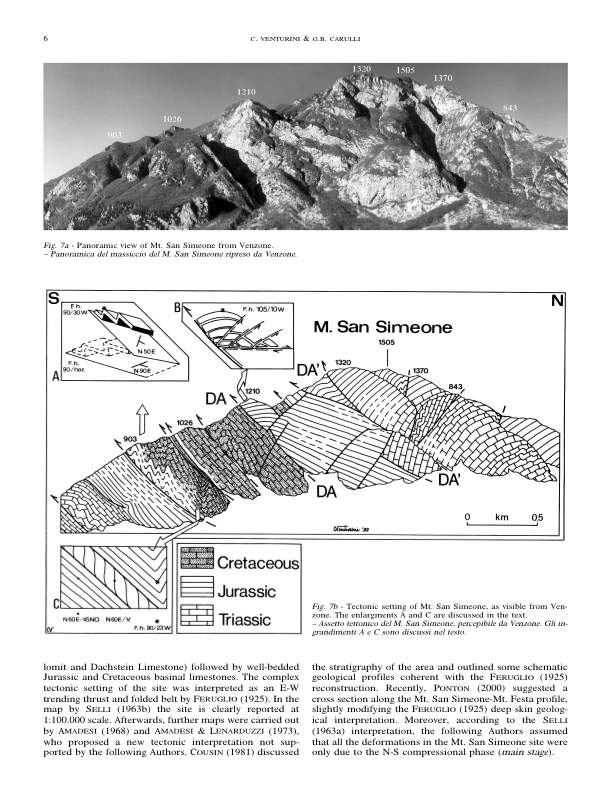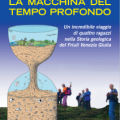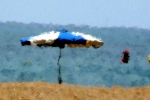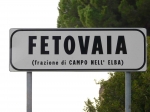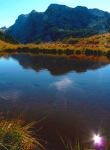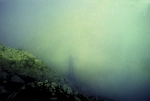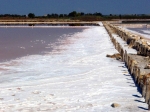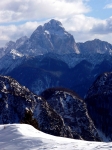Mt. Amariana, Mt. Plauris, Mt. San Simeone
The scope of this paper is to describe the Neoalpine tectonics and kinematics of an area corresponding to the seismic core of the Friuli region. The study area spreads along the middle part of the Tagliamento River valley and is located between the Carnic and the Julian Alps and Prealps. They represent the easternmost part of the Southern Alps and experienced the strongest Alpine compression and shortening during Miocene time.
Up to now the Neoalpine thrust-and-fold belt of the Carnic and partly Julian Alps has been interpreted as exclusively due to a strong N-S trending compression (Middle-?Late Miocene), responsible for the present tectonic framework of both the easternmost Southern Alps and the study area in particular. On the contrary, this work emphasizes the presence of younger, although weaker, deformations produced by more recent compression which roughly refers to the Pliocene s.l.. The compression maximum stress was about NW-SE oriented, as desumed from both meso- and macrostructural analyses.
The structural investigations were carried out in three distinct areas, corresponding to the Mt. Amariana, Mt. Plauris and Mt. San Simeone, respectively. All three locations record the effects of both the N-S and NW-SE trending maximum stresses. Within the former deformation set, due to the N-S compression, some backthrusts have been detected in the Mt. Amariana and Mt. Plauris. The latter deformation set spreads over peculiar zones bounded by early faults reactivated with a strike-slip movement, and consists of i) NE-SW trending thrusts and folds, somewhere interfering with the older deformation set; ii) tectonic rearrangement of the previous E-W bedding attitude inherited from the N-S compression. The rearrangement produced tilting to the NW (25°-40°, southern side of the Mt. San Simeone), and large twisting of the bedding strike, from E-W to SW-NE direction, as documented in the zones S of the Mt. Amariana and Mt. Plauris.
KEY WORDS: Southern Alps, Friuli, Tectonics, Kinematics, Neoalpine phase.
Evoluzione strutturale neoalpina del nucleo centrale carnico (M. Amariana, M. Plauris, M. San Simeone)
Il settore oggetto di studio, situato alla confluenza tra i Fiumi Fella e Tagliamento, in territorio friulano, costituisce un nodo strutturale complesso, generato durante la fase neoalpina. La successione coinvolta è essenzialmente carbonatica e di età triassico sup.-cretacea. Complessivamente il settore appartiene alla catena alpina carnica e giulia p.p., la quale forma il segmento più orientale delle Alpi Meridionali.
L’analisi deformativa è stata sviluppata in modo indipendente su tre settori distinti (M. Amariana, M. Plauris, M. San Simeone), separati morfologicamente dalle ampie valli del Fella e Tagliamento. L’assetto tettonico dell’area di studio è il risultato della sovrapposi- zione di due associazioni di strutture dovute all’azione di due suc-
cessivi sforzi compressivi, entrambi ascrivibili alla fase neoalpina. I risultati e le interpretazioni sviluppate sui singoli settori sono con- fluite in un coerente quadro deformativo di sintesi che ha portato ad un tentativo di ricostruzione dell’evoluzione cinematica della complessiva area studiata. L’indagine si è avvalsa di analisi macro- e mesostrutturali, con particolare attenzione alle interferenze tra gl’insie- mi di strutture.
I più antichi effetti deformativi registrati nel settore sono ascri- vibili all’azione di uno sforzo compressivo orientato N-S e databile indirettamente al Miocene med.-?sup. (stadio principale). Ne è scaturita una strutturazione ad embrici tettonici sud-vergenti (linee del M. Festa, M. Dof-M. Auda e Pinedo-Uccea), complicata da un sistema di accavallamenti retrovergenti (linee del M. Amariana, di Pos- selie, della Val Resia e del M. Plauris). Queste ultime sono confinate lateralmente da svincoli trascorrenti rappresentati da faglie verticali orientate rispettivamente circa NE-SW (trascorrenti sinistre) e NW-SE (trascorrenti destre), convergenti verso N.
Il secondo sforzo compressivo, attivo nel Pliocene s.l., si orientò NW-SE (stadio tardivo). Ha dato luogo sia a riarrangiamenti dell’assetto tettonico ereditato dallo stadio principale della fase neoalpina, con basculamenti e torsioni verso la direzione NE-SW delle precedenti strutture ad orientamento E-W, sia alla produzione di strutture minori (pieghe, thrust, duplex minori). Gli effetti di questa compressione sono sempre concentrati in particolari settori confinati tra precedenti faglie riattivate in trascorrenza o transpressione.

